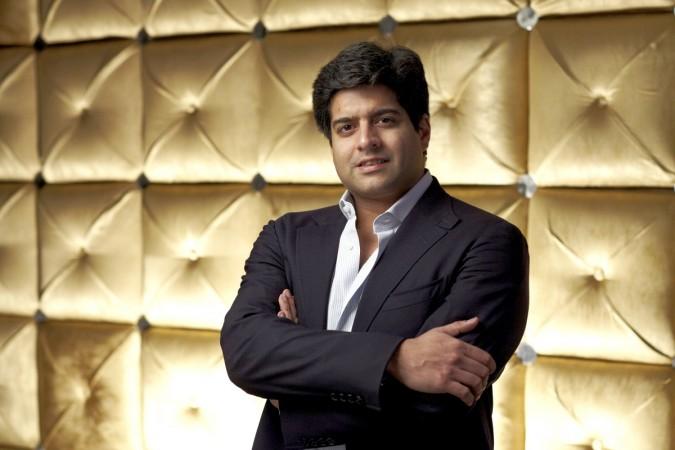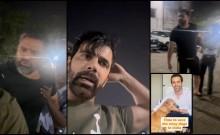
Twenty years ago, Prime Focus was a four member start-up that had its humble beginnings in a Mumbai garage. As a company that focused on being a media services provider, the team edited TVCs, offered post-production services to films, broadcast industries and advertising firms.
Today, the company has grown to include a 7,000 member staff, which specialises in visual effects and conversion of digital content from 2D-3D formats, among other services. Prime Focus has worked with several Hollywood films such as "Avatar," "Gravity," and has more recently developed content for "Star Trek: Beyond's" Barco Escape release, a technology that makes viewing more immersive and exciting.
In a conversation with International Business Times, India, Mr. Merzin Tavaria, co-founder and chief creative director of Prime Focus, talked about 3D technology in India, VFX in Bollywood and the company's role in enhancing "Star Trek: Beyond's" movie watching experience.
International Business Times: What was Prime Focus's role in developing content for the Barco Escape release of "Star Trek: Beyond?"
Merzin Tavaria: Prime Focus was brought on board by production company Bad Robot to create the extra footage required for the left and right screens of the Barco Escape theatrical format. Barco Escape utilises three cinema projectors and two additional Cinemascope screens to present audiences with a much wider field of view, enhancing the cinema-going experience. As one of the first to create content for this exciting new presentation format, we had a team of 120 dedicated artists working closely with our colleagues at Double Negative (Dneg), the main VFX partner on "Star Trek Beyond," to create brand new visuals to expand and enhance the action playing out on the main screen.
IBT: What challenges did you face while adapting the movie in this format?
Tavaria: There were a number of challenges that needed to be addressed on this project.
The first was the technical challenge of creating visuals for this brand new format. We spent most of May 2016 in R&D, working out the best approach in creating the action for the side screens so that it blended seamlessly with the centre screen. Essentially we were creating one huge 6K image across a 270-degree field of view. We realised early on that the scenes that we would be extending were already impressively wide shots on the single centre screen, with focal lengths of around 100mm. If we'd applied similar focal lengths to the left and right cameras, we'd have been looking behind ourselves, so we had to come up with intelligent and creative ways of using the extra screen space.
Then we had to address the creative challenges of creating these visuals. We had a certain amount of creative freedom to develop the content for the left and right screens, taking cues from the action on the centre screen. Most of the shots already had an environment that extended left and right from the main screen to some extent, and we would extend or recreate this to fill the entire field of vision. Then creative decisions had to be taken – for example, if the Enterprise was coming in from the right screen and filling the centre screen, we would need to recreate the CG for the extended scene, and may need to light it differently, or add additional destruction elements. There were a lot of considerations.
Finally we had the logistical challenges - of sharing and transferring hundreds of terabytes of data between our facilities, and of dealing with the challenging production timeline. When we started our work on the Barco Escape content it was still early in the VFX process, and the sequences were still taking shape.
Starting with work-in-progress sequences, we began to create the left and right screen content based on the latest available versions of the centre screen shots, tracking the progress and director's notes on the centre screen content and applying the changes to the left and right screens as new versions became available. The fact that we are able to accommodate these changes and move around so much data so efficiently is testament to the strength of our integrated global organization.
IBT: How will it enhance the experience of movie-goers who watch it in this format, as compared to IMAX or the single screen format?
Tavaria: The Barco Escape format adds another level of immersion to the theatre-going experience. Being surrounded on both sides by the action really draws the audience into the film in a whole new way, allowing the film to be experienced on a much grander scale. It also gives the filmmaker a much broader canvas on which to paint, and opens up a host of exciting new creative possibilities. Seeing the effect of our work being projected across three screens and a 270-degree field of view is incredible.
IBT: Where do you see Barco Escape technology in the Indian film experience?
Tavaria: I think that Barco has created a format that gives audiences another reason to leave their sofas and go out to experience films in the way in which they should be enjoyed – on the big screen, or in this case the very big screen! Although there are no Barco Escape installations in India yet, we have a long and proud history of film making and a general public who are crazy about films, and I believe that Indian audiences will be amazed and excited when they see films in Barco Escape.
IBT: 3D technology hasn't been implemented extensively in Indian films. Why do you think this is?
Tavaria: It is an interesting question. The expertise and experience is definitely available, but until now filmmakers have not embraced the technology in the way they have in Hollywood and in China. There are many advantages to 3D, including additional revenue per ticket for 3D films and prevention of piracy, but few Indian movies have been released in 3D thus far, and most that have didn't make enough profit to justify the extra costs associated with 3D. Also a lack of infrastructure investment in 3D cinema screens and criticism of poor projection quality means that Indian audiences may currently choose 2D screenings even when a 3D version of a movie is available. It's a shame that India has not embraced the format in the same way as other film making nations. We are passionate about the format, and we'd encourage Indian filmmakers to re-consider the 3D format from a creative point of view, and ask Indian theatre chains to look again at the global resurgence in 3D ticket sales.
IBT: Why aren't films that are heavy on VFX being produced more often in India?
Tavaria: I think that if you really look at the work that companies like Prime Focus are doing in the VFX space in India you may re-frame your question! There are definitely VFX heavy films being produced in India – for example, in the last year alone we have contributed a total of over 12,000 VFX shots for over 30 films, including "Bajrangi Bhaijaan," "Prem Ratan Dhan Payo," "Brothers" and "Housefull 3." But there is a big difference between the way VFX is used in Hollywood and in India – in general we tend to use 'invisible' VFX to extend scenes and sets, or enhance other aspects of the visuals, rather than using VFX to create flying superheroes or to destroy entire cities. Perhaps that is why it feels like India isn't producing so many 'VFX heavy' films.
IBT: Tell us about your future projects.
Tavaria: On the Bollywood front, we have some exciting projects releasing soon, including "A Flying Jatt," "Akira," and "M.S.Dhoni: The Untold Story." Internationally, Double Negative is providing VFX services for films such as "Fast 8," "Wonder Woman" and "Justice League," and our stereo conversion teams are working on "Beauty and the Beast," "King Arthur: Legend of the Sword," "Fantastic Beasts and Where To Find Them" and "The Great Wall," as well as the DC Comics films. And of course we're hoping that there will be more films releasing in the Barco Escape format!

















